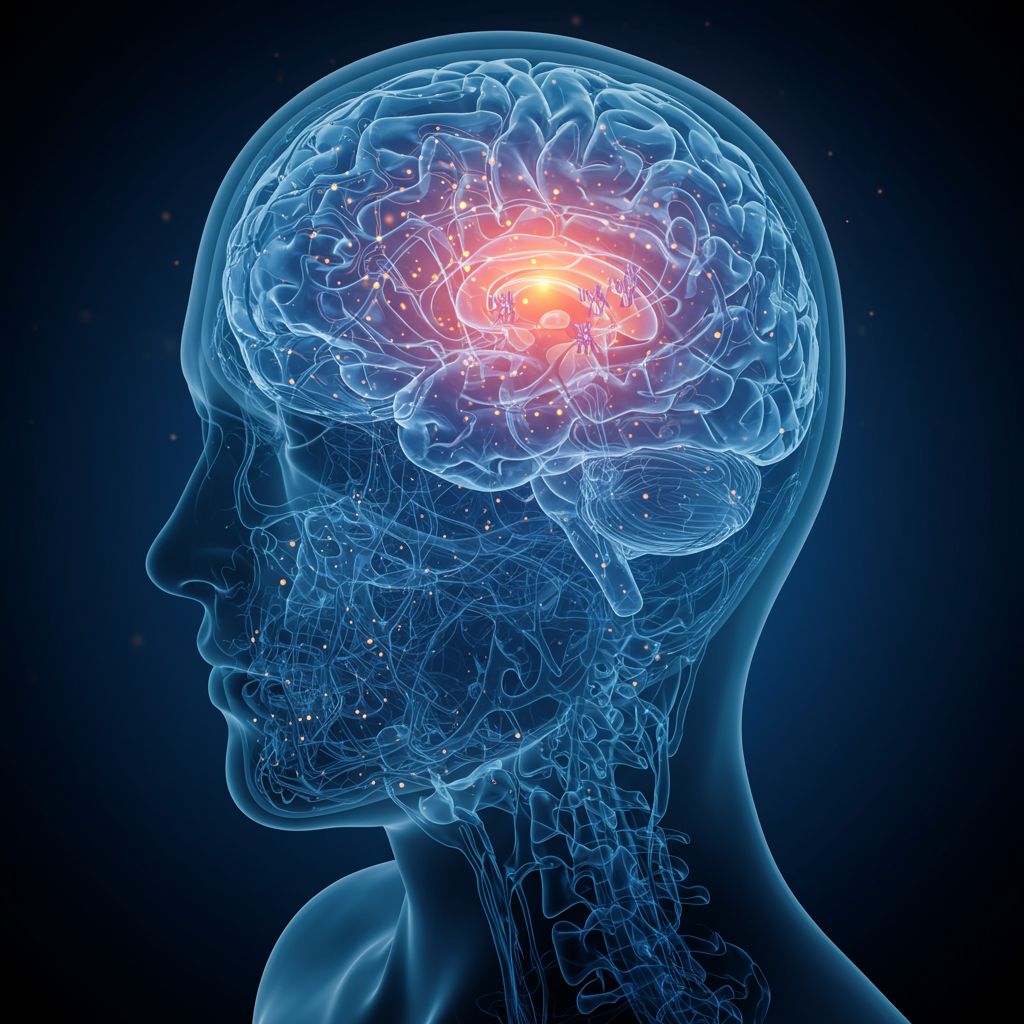For millions worldwide, the shadow of long COVID persists, bringing with it a constellation of debilitating symptoms. Among the most perplexing and pervasive is brain fog—a colloquial yet deeply impactful term describing a range of cognitive impairments. This “fog” can cloud memory, hinder decision-making, and disrupt reasoning, often severely limiting an individual’s ability to work or manage daily life. New research is now cutting through this fog, offering a groundbreaking discovery that points to specific biological changes in the brain. A recent study has linked long COVID brain fog directly to an increase in critical brain receptors, offering a vital clue to its underlying mechanisms and paving the way for targeted treatments.
The Global Shadow of Long COVID’s Brain Fog
Despite the acute phase of the COVID-19 pandemic having receded, long COVID remains a global health crisis. Approximately 400 million people worldwide continue to grapple with this chronic condition, which can linger for years, impacting various organ systems, including the brain. Data from Los Angeles County reveals that 77% of long COVID patients experience symptoms severe enough to limit their daily activities, with a significant quarter reporting “significant limitations.” Nationally, studies suggest that nearly 15% of U.S. adults overall contend with symptoms lasting three months or longer after infection.
Brain fog stands out as one of the most common and distressing manifestations of long COVID, affecting over 80% of patients. It’s not merely a feeling of tiredness; it encompasses measurable impairments in cognitive functions. Individuals often report difficulty concentrating, struggling to retrieve memories, or finding it challenging to process information and make decisions. This cognitive decline can be profoundly disabling, leaving individuals unable to maintain employment or engage in activities they once enjoyed. Until recently, the precise biological factors driving this pervasive symptom remained largely unknown, making effective treatment difficult to develop.
Unveiling the Molecular Culprit: AMPA Receptors
A landmark study, published on October 1, 2025, in the scientific journal Brain Communications by Fujimoto and colleagues, has significantly advanced our understanding. This research, titled “Systemic increase of AMPA receptors associated with cognitive impairment of long COVID,” utilized advanced neuroimaging to investigate molecular changes within brain synapses. Scientists employed a specialized form of positron emission tomography (PET) to visualize the density of alpha-amino-3-hydroxy-5-methyl-4-isoxazolepropionic acid, or AMPA receptors, in the brains of 30 long COVID patients and 80 healthy volunteers.
AMPA receptors play a critical role in brain function. They are a crucial class of receptors for the neurotransmitter glutamate, responsible for the rapid transmission of neural information. Essential for processes like learning and memory formation, these receptors are highly relevant to the cognitive impairments observed in brain fog. By visualizing their density, researchers hoped to pinpoint specific neurological alterations in long COVID patients.
Groundbreaking Findings: More Receptors, Worse Cognition
The findings from the Fujimoto study were remarkably compelling. A statistical analysis across the entire brain revealed that long COVID patients exhibited a significantly higher density of AMPA receptors compared to healthy individuals. This elevated density was also observed in several specific brain regions.
Even more critically, the increase in AMPA receptors in various brain areas directly correlated with worse performance on neuropsychological tests designed to measure memory recall and reasoning. This establishes a clear link: higher AMPA receptor density is associated with more severe brain fog. Additionally, the study found a strong connection between increased AMPA receptors and elevated markers of immune system activity, suggesting a complex interplay between neurological and immune responses. Researchers hypothesize that an excessive number of these receptors might disrupt normal cognitive processing, potentially leading to neurotoxic effects on the brain due to overactivity.
Beyond the Virus: The Role of Brain Inflammation
The discovery of altered AMPA receptor density builds upon a growing body of evidence pointing to neuroinflammation as a key player in long COVID brain fog. A 2024 study from the University of Minnesota, led by Maxim Cheeran, Ling Li, and Walter Low, revealed that SARS-CoV-2 infection can trigger significant inflammation in the brain. Crucially, this neuroinflammatory response occurred even when no detectable virus was present directly within the brain tissue itself. This suggests an indirect mechanism for brain damage, where the body’s immune response to a peripheral infection impacts the central nervous system.
The Minnesota research, published in Frontiers in Microbiology, also highlighted the influence of age and sex on these neurological impacts. Older males, for instance, showed higher viral loads and more pronounced neurological symptoms, with increasing age correlating with heightened neurological inflammation. The study identified several critical biological pathways in the brain affected by the virus, including a dysregulated immune response, damage to the protective blood-brain barrier, and detrimental effects on the formation and function of nerve cells. Such widespread impacts can impair overall brain function and potentially lead to permanent neurological damage.
Deeper Dive into Chronic Inflammation and Immune Dysregulation
Further research from the University of Alberta, led by immunologist Shokrollah Elahi, offers additional insights into the complex inflammatory cascade. These studies compared severe long COVID patients with individuals who had recovered without complications, revealing significant immune cell dysregulation. Long COVID patients exhibited higher levels of inflammatory immune cells (neutrophils and monocytes) and “worn-out” killer T cells, along with elevated levels of proteins like galectin-9 (linked to inflammation and brain fog) and artemin (associated with pain and cognitive impairment).
Elahi’s team also explored a novel hypothesis for chronic inflammation: “gut leakiness.” They suggest that damage to intestinal tissues early in the infection could allow minute traces of microbes to enter the bloodstream, triggering systemic inflammation. Supporting this, they found elevated protein markers associated with gut leakiness in long COVID patients. Interestingly, a third study by Elahi’s team, published in The Lancet Microbe, found no signs of systemic SARS-CoV-2 persistence in the blood of long COVID patients 12 months post-infection, challenging one common theory.
These findings align with broader theories explored by the NIH MedlinePlus Magazine, which outlines several potential mechanisms for long COVID, including an extreme and prolonged autoimmune response, the reactivation of dormant viruses like Epstein-Barr, or direct long-term organ and blood vessel damage. The elevated AMPA receptors and the pervasive neuroinflammation observed could be key components of such a sustained autoimmune or inflammatory attack.
A Glimmer of Hope: New Avenues for Treatment and Prevention
The accumulating scientific evidence, particularly the discovery of increased AMPA receptor density, offers new avenues for therapeutic intervention. Targeting these receptors specifically could become a very promising approach to alleviating brain fog and supporting the often-severely impacted long COVID community. If excessive AMPA activity indeed disrupts cognitive processing or contributes to neurotoxic effects, modulating their function could restore neuronal balance.
Beyond receptor-specific treatments, other research areas hold promise. Elahi’s hypothesis regarding gut leakiness suggests that treatments for gastrointestinal issues could indirectly improve long COVID symptoms. His team also identified deficiencies in amino acids like sarcosine and serine, which have anti-inflammatory and neuroprotective properties, with some patients reporting improvements after supplementation.
Preventive strategies remain paramount. Public health experts, such as Barbara Ferrer from L.A. County Public Health, emphasize the importance of staying up-to-date on vaccinations and avoiding reinfection. While no one is immune to long COVID, even after a mild infection, vaccination significantly reduces the risk. Ongoing initiatives like the NIH RECOVER Initiative are marshalling vast resources to understand long COVID’s causes, risk factors, and pathways for prevention and treatment, bringing together diverse teams and patient experiences to drive scientific progress.
Frequently Asked Questions
How do AMPA receptors contribute to brain fog in long COVID patients?
New research, published in Brain Communications, indicates that long COVID patients exhibit a significantly higher density of AMPA receptors in their brains compared to healthy individuals. AMPA receptors are crucial for rapid neural communication and play a key role in learning and memory. The study found a direct correlation between this increased receptor density and worse performance on cognitive tests measuring memory and reasoning, which are hallmarks of brain fog. Researchers hypothesize that an excessive number of these receptors may disrupt normal cognitive processing, potentially leading to neurotoxic effects due to overactive brain activity.
What are the broader implications of these brain fog discoveries for long COVID treatment?
The discovery of elevated AMPA receptor density provides a clear biological target for therapeutic development. Modulating these receptors could help restore normal cognitive function and alleviate brain fog symptoms. Furthermore, this finding reinforces the theory that neuroinflammation and immune system dysregulation play a central role in long COVID. Other research points to chronic inflammation, potentially driven by proteins like galectin-9 and artemin, or even gut leakiness, as contributing factors. These insights collectively pave the way for a multi-faceted approach to treatment, encompassing receptor modulation, anti-inflammatory therapies, and addressing underlying systemic issues.
Are there any current strategies to prevent or manage long COVID brain fog?
While no definitive cure for long COVID brain fog exists yet, current strategies focus on prevention and symptom management. Experts recommend staying up-to-date on COVID-19 vaccinations and diligently avoiding reinfection, as these measures can significantly reduce the risk of developing long COVID. For those experiencing brain fog, managing symptoms involves addressing underlying inflammation, optimizing gut health, and in some cases, considering amino acid supplementation. Ongoing research initiatives, like the NIH RECOVER program, are actively working to identify more effective treatments and supportive care for patients.
Moving Forward: Understanding and Supporting Long COVID Patients
The journey to fully understand and effectively treat long COVID brain fog is complex, but these recent scientific discoveries offer a powerful beacon of hope. By pinpointing specific molecular changes like the increase in AMPA receptors and elucidating the role of neuroinflammation, researchers are finally beginning to unravel the mysteries behind this debilitating condition. The findings not only enhance our understanding of how SARS-CoV-2 impacts the brain but also provide concrete targets for future therapies. As scientific efforts continue, the focus remains on translating these breakthroughs into tangible relief and better quality of life for the millions worldwide living with the enduring legacy of long COVID.



